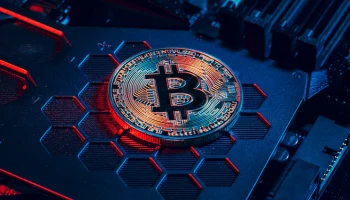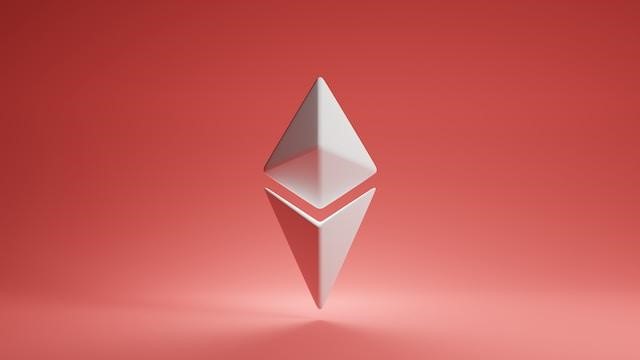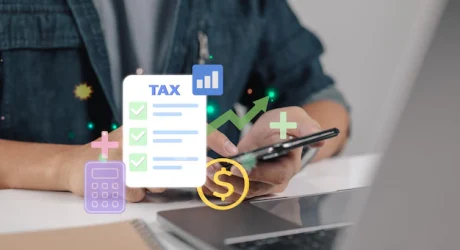Optimism, the Layer 2 scaling solution for Ethereum, reduces the amount of data that needs to be computed on the main Ethereum chain by processing transactions outside the main blockchain network, bringing considerable improvements in processing speeds.
It completed its most major update, the Bedrock upgrade, representing the culmination of years of research and development by the Ethereum scaling community. The Bedrock release separates the OP Stack into three components, namely consensus, execution, and settlement, the design of which borrows from the Engine API introduced for the Merge.
It aims to reduce the differences between the Ethereum Mainnet and Optimism’s Layer 2. Blockchains such as Ethereum, where the lion’s share of dApp activity occurs, have struggled regarding affordability, scalability, and accessibility.
Optimism, created by the talented Ethereum developers, makes it easier to scale apps, so there are no hurdles or surprises in terms of performance. It’s not just a solution; it’s a revolution. Optimism has its token, OP, and helps fund third-party development proposals and integrations on the platform.
OP is based on Ethereum, so making price predictions is pointless. Performing transactions on the Optimism network requires Ethereum. You can buy into cryptocurrency at the current Ethereum price via Binance. It’s possible to retrieve the crypto amount immediately. Please take note of the fact that the crypto market is volatile; it’s normal to see fluctuations. Not surprisingly, trading activity on the Optimism network has surged by over 60%.
The Optimism Network Has Witnessed Over 550,000 By the Middle of June
According to Cointelegraph, which covers everything FinTech, prior to the Bedrock Upgrade, the Optimism network saw less than 300,000 transactions per day. Nevertheless, by the middle of June, the figures had surged to 67% to roughly 550,000 transactions.
It seems that the increased transaction speed and reduced gas fees have attracted more users to the platform, who enjoy lower deposit times and fees, not to mention security. The transaction volume slowly but surely rose following the fork, reaching a peak of 550,00 on June 15. A progressive decrease came after, with daily transactions of around 500,000 by the time the data was obtained (i.e., June 23).
Leading the list of apps on the Optimism network, Galxe registered more than 528,000 transactions over the week. As a friendly reminder, Galxe is a Web3 credential data network with over 11 million unique users to date. Other top apps on Optimism include but aren’t limited to Perpetual Protocol, where users can buy and sell derivative contracts, Gnosis Safe multi-sig crypto wallet, and Stargate Finance, a fully composable liquidity transport protocol.
Optimism features more than 100 dApps imported from Ethereum, such as lending services, DAOs, NFT marketplaces, blockchain tools, and crypto-wallets. It encourages developers to build Layer 2 solutions by taking advantage of its technology.
The Bedrock Upgrade Is Part Of A More Extensive Initiative To Form A Superchain

The highly anticipated Bedrock Upgrade has been in development since May 2022. It marks the first major network upgrade voted by the Token House. The Bedrock Upgrade is poised to make the Optimism platform more efficient and accessible, with multiple transactions being included in a single rollup block. Equally, it’s expected to enhance node performance.
Its growth should be reduced by 15GB per year, so running a node will be less resource intensive. The aim of Bedrock is to change the way Optimism processes transactions, allowing for more data per compression frame and, therefore, a better ratio. Transactions will be arranged into sequencer batches, which will be further grouped into channels, and sent back to Ethereum.
Optimism approaches Ethereum equivalence via the introduction of EIP-1559, which brings changes as regards how gas fees are structured. Attention must be paid to the fact that the parameters are different – block gas limit, block gas target, EIP-1559 elasticity multiplier, EIP-1559 denominator, maximum base fee increase, maximum base fee decrease, and block time in seconds.
Transactions to L1 are submitted to a non-contract address. Ethereum isn’t burnt because it would lock in the bridge forever. To reduce differences between OP Mainnet’s EVM and Vanilla Ethereum’s EVM, the L1BLOCKNUMBER opcode has been removed to introduce new functionality.
The Bedrock Upgrade opens the door for other exciting updates, such as Superchain. Superchain is a unified network of chains built leveraging the OP Stack that modularizes all elements of Layer 2 into homogenized open-source models. EVM equivalence enables the copy-pasting of DeFi codes across EVM-equivalent rollups on the spot.
Simply put, Superchain is a communication layer, a permissionless system for deploying new chains to a shared network. The BASE network will join Optimism within the Superchain network to onboard numerous users in a decentralized way. At any rate, a Superchain network is necessary to scale to a global user base.
OP Mainnet Transactions Require Ethereum, Jus as Do Mainnet Ethereum Transactions
Optimism is easier to use than most of its competitors. If you already have an Ethereum address, you’re good to go. All you have to do now is to import the custom OP token and visit a DeFi protocol that supports Optimism, such as PoolTogether. You can deposit your Ethereum directly into the Optimism bridge, which is basically a self-executing contract that allows you to move tokens from the Ethereum Mainnet to the Optimism network.
After having connected your wallet, you’ll be able to see your balance on the main net. Wait for the bridge confirmation, which can take a few minutes (or a couple of hours). You can keep an eye on the status of the transaction if you like.
Once your tokens are on the Optimism network, you can interact with any of the smart contracts created, sending messages between L1 and L2, sending tokens between L1 and L2, or querying information about the L1 fee. You can deploy your tokens as you would on Ethereum, but with faster transaction speeds and, above all, lower gas fees.
The sequencer compresses the data to reduce the size of the transactions and, thus, saves money, by submitting it back to Ethereum. It instantly confirms valid transactions, creating and executing blocks. Optimism began airdropping OP tokens to users, so you might get lucky.
Conclusion
Optimism’s Bedrock Upgrade provided unprecedented modularity, simplicity, and Ethereum equivalence to the L2 network.
Read Also:




























